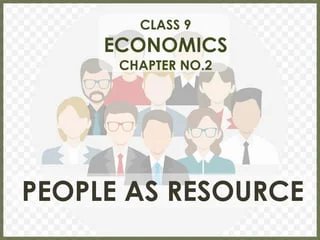Sectors of the Indian Economy - Class 10
Sectors of the Indian Economy is a term used to describe the different categories of economic activities in India. These sectors are typically classified based on the nature of their economic activities and the resources they utilize. Three main sectors of the Indian economy: Primary Sector: This sector involves activities related to the extraction and production of raw materials from natural resources. Examples include agriculture, mining, forestry, and fishing. Secondary Sector: This sector involves the processing of raw materials into finished goods. Examples include manufacturing, construction, and electricity generation. Tertiary Sector: This sector provides services to individuals and businesses. Examples include transportation, communication, trade, banking, healthcare, and education. The Indian economy is undergoing a structural shift, with a growing emphasis on the secondary and tertiary sectors. However, the primary sector still plays a significant role, particularly in rural areas. ভারতীয় অর্থনীতির ক্ষেত্রগুলি হল এমন একটি শব্দ যা ভারতের অর্থনৈতিক ক্রিয়াকলাপের বিভিন্ন বিভাগকে বর্ণনা করতে ব্যবহৃত হয়। এই ক্ষেত্রগুলিকে সাধারণত তাদের অর্থনৈতিক কার্যকলাপের প্রকৃতি এবং তারা যে সম্পদ ব্যবহার করে তার উপর ভিত্তি করে শ্রেণীবদ্ধ করা হয়। ভারতীয় অর্থনীতির তিনটি প্রধান ক্ষেত্রঃ প্রাথমিক ক্ষেত্রঃ এই ক্ষেত্রে প্রাকৃতিক সম্পদ থেকে কাঁচামাল উত্তোলন ও উৎপাদন সম্পর্কিত কার্যক্রম জড়িত। উদাহরণের মধ্যে রয়েছে কৃষি, খনি, বনায়ন এবং মাছ ধরা। সেকেন্ডারি সেক্টরঃ এই সেক্টরে কাঁচামাল প্রক্রিয়াকরণ করে সমাপ্ত পণ্য তৈরি করা হয়। উদাহরণের মধ্যে রয়েছে উৎপাদন, নির্মাণ এবং বিদ্যুৎ উৎপাদন। তৃতীয় ক্ষেত্রঃ এই ক্ষেত্রটি ব্যক্তি এবং ব্যবসাগুলিকে পরিষেবা প্রদান করে। উদাহরণের মধ্যে রয়েছে পরিবহন, যোগাযোগ, বাণিজ্য, ব্যাঙ্কিং, স্বাস্থ্যসেবা এবং শিক্ষা। গৌণ ও তৃতীয় ক্ষেত্রের উপর ক্রমবর্ধমান জোর দিয়ে ভারতীয় অর্থনীতি একটি কাঠামোগত পরিবর্তনের মধ্য দিয়ে যাচ্ছে। তবে, প্রাথমিক ক্ষেত্রটি এখনও বিশেষ করে গ্রামাঞ্চলে গুরুত্বপূর্ণ ভূমিকা পালন করে।
English
Last updated
Wed, 27-Nov-2024



















